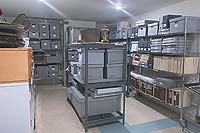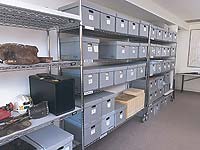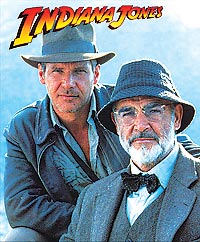by Moab Museum Staff
Have you ever packed away an old wedding dress or quilt, only to uncover it decades later and find it discolored, faded, or bearing unfamiliar holes? Perhaps you have an old photo or letter inscribed with the penmanship of a great-great grandparent that appears yellower and more brittle every time you uncover it? It’s not a mystery as to why aged items deteriorate. Environmental elements such as temperature, moisture, chemicals, and insects all play a part. But if the item was priceless to your family, symbolic to the nation, or valuable on a worldly scale, deterioration wouldn’t be an acceptable outcome. This is the scenario faced by a museum that is entrusted to preserve invaluable objects forever.
How a collection is cared for differentiates a curiosity shop from a public institution. The first presents an accumulation of items which may or may not have any record of receipt or document chronicling its origin or significance. Items are likely to deteriorate and in time be lost forever. Additionally, the owner(s) are under no legal obligation to the public or care of the items in question. Public institutions, however, adhere to mandated standards that require specific materials and protocols to ensure objects and associated information are preserved and organized for accessibility to the public in perpetuity. For many, a museum is the preferred home for an especially meaningful historical relic. A museum promises that items will be preserved, and that the donor’s legacy will be shared with future generations.
Preserving a community’s treasured items is costly, and is part of what museum visitors help support when they pay an admission fee at a museum. Many visitors want to know this: what could be so costly about archival collections care? In short—the standard of care and curation of exhibits (stories) for the public, are why museums exist. These standards must be upheld to maintain relevancy and retain the public’s trust. The materials, equipment, and expertise required to maintain collections are specialized and expensive. A few high-ranking items on a museum’s budget list include (but are not limited to):
• supplying specialized acid-free materials including boxes, photo sleeves, custom mounts, cases, and supports
• utilizing environmental monitoring devices and electronic record-keeping
• employing professionally trained staff equipped to make economically sound decisions regarding the adoption of new collections (often with space and budgetary limitations) and a vision for curating exhibits for the public
• updating database software, digital storage, and scanning equipment to back up files and photos in the event of an unforeseen fire, flood, or theft
• installing archival-grade exhibit platforms, vitrines, and mounts.
Museums serve as critical conduits for educating the public about the region’s past, and ongoing local and state history. Yet, for reasons including staffing turnover and resource inaccessibility, many small, rural museums across the country struggle to achieve or maintain accreditation, or even meet best practice standards. This is why they rely on the public through admission fees, memberships, and other generous gifts, to continue stewarding historic collections and archives.
The Moab Museum welcomes your questions and invites you to share comments and visions for the future. Please feel free to contact staff directly with your questions at 435-259-7985 or info@moabmuseum.org.
The Museum is open Tuesday through Saturday, 10 a.m. to 6 p.m. Consider becoming a member. When you join the Moab Museum at any membership level, you directly support the preservation of the region’s cultural and natural history. Members empower the Moab Museum to grow, inspire, and serve the community now and for future generations. Business memberships are also available.
www.moabmuseum.org • 118 East Center Street, Moab, UT • 435-259-7985
Have you ever been curious about the history of the Moab area? How did Moab get its name? Who lived here before the settlers? Perhaps you’ve intended to find the answers by exploring the recently-renovated Moab Museum but just haven’t gotten around to it yet? We have some good news for you: Grand County Public Library now has two Museum Passes available for loan to library card holders. Sometimes called “membership cards”, these passes can be borrowed from the library for two weeks at a time. Each pass permits free admittance to the museum for an entire household. The Grand County Public Library is dedicated to encouraging a love of life-long learning, making a partnership with the museum a natural fit. The local museum is currently home to a colorful and dynamic exhibit called “Hopi Katsinas: Evolving Styles, Enduring Meanings” through the month of February. You can learn more about the Moab Museum on their website moabmuseum.org
Place a hold on your Museum Pass today by logging into your library account at catalog.moablibrary.org.
Don’t yet have a library account? It’s easy to get one! Visit catalog.moablibrary.org/MyAccount/SelfReg or come see us at the library in person at 257 E. Center St. Please call us with any questions @ 435-259-1111
 Red Cliffs Lodge, on the banks of the mighty Colorado River, is home to the Moab Museum of Film & Western Heritage. The lodge is built on the old George White Ranch, a key location for nine of the big westerns including Rio Grande, Cheyenne Autumn, Ten Who Dared, The Commancheros, and Rio Conchos.
Red Cliffs Lodge, on the banks of the mighty Colorado River, is home to the Moab Museum of Film & Western Heritage. The lodge is built on the old George White Ranch, a key location for nine of the big westerns including Rio Grande, Cheyenne Autumn, Ten Who Dared, The Commancheros, and Rio Conchos.
The late George White was founder of the Moab to Monument Valley Film Commission, the longest ongoing film commission in the world.
In the museum one can learn more about film locations, how the sets are built, and how the filming process is managed on nature’s own sound stage. On display in the museum are production photographs, movie posters, autographed scripts, props from the many pictures filmed in the area, and displays about the western ranching heritage. For information, call Red Cliffs Lodge at 435-259-2002.
 Through the magnificent landscapes of southeastern Utah, writers have been inspired and stories born here. Zane Grey, the famous western novelist, traveled through the area in 1912. His visit inspired him to write his book Riders of the Purple Sage. The book was made into a movie starring Ed Harris and Amy Madigan, and filmed on locations around Moab.
Through the magnificent landscapes of southeastern Utah, writers have been inspired and stories born here. Zane Grey, the famous western novelist, traveled through the area in 1912. His visit inspired him to write his book Riders of the Purple Sage. The book was made into a movie starring Ed Harris and Amy Madigan, and filmed on locations around Moab.
| A partial list of stars that have made movies in Moab John Wayne, Maureen O'Hara, Henry Fonda, Lee Marvin, Rock Hudson, Jimmy Stewart, Richard Boone, Anthony Quinn, Mickey Rooney, Shirley Temple, Kris Kristofferson, Billy Crystal, Robert Duvall, Gene Hackman, Bill Murray, Jack Palance, Susan Sarandon, Geena Davis, Ted Danson, Tom Cruise, and many more. |